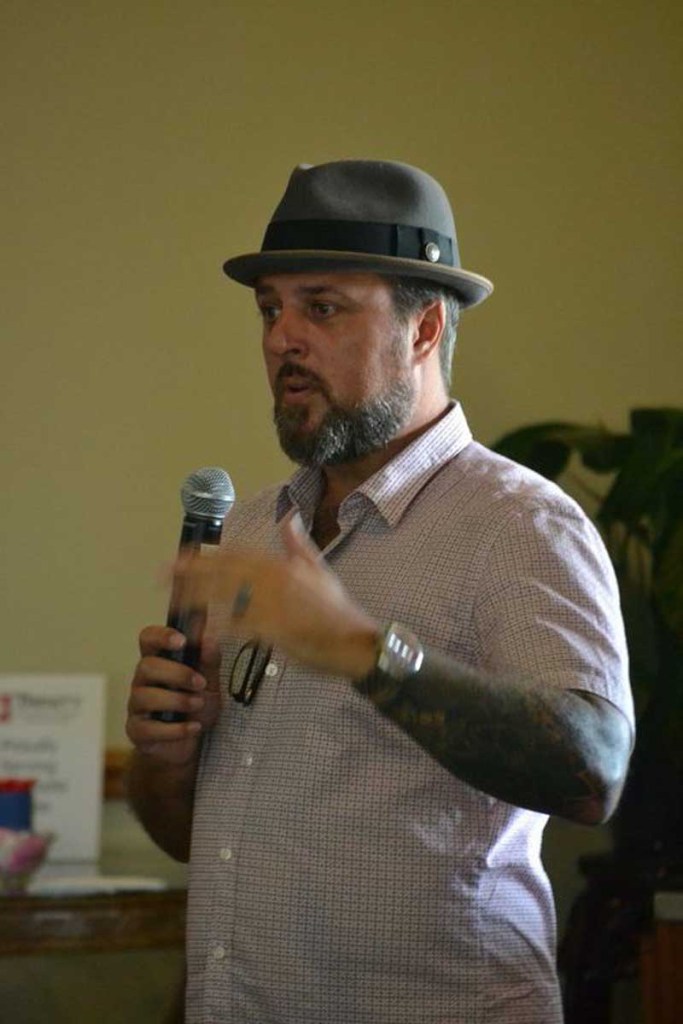Workshop weighs local pluses, minuses for film industry
Published 2:51 pm Thursday, October 12, 2017

- Pat Donahue/Times-EnterpriseFilmmaker Michael Carney now calls Thomasville home and said more filmmakers could be interested in coming to the area.
THOMASVILLE — While Thomasville may not become Hollywood South overnight, the curtain could be rising on the area’s chances on becoming a film mecca.
As part of the ongoing Covey Film Festival, a workshop earlier this week explored what it would take for Thomasville and Thomas County to be home to more filmmaking or post-production endeavors. The workshop was a joint production of the Covey Film Festival and the Thomasville Payroll Development Authority (PDA).
PDA Executive Director Shelly Zorn said the newly-created Georgia Film Academy (GFA) could be a big help. The GFA provides hands-on experience for those seeking jobs in the state’s expanding television and film industry.
“The Georgia Film Academy, we think, is the biggest opportunity out there,” Zorn said.
Currently, 12 state colleges or universities and technical colleges are members of the GFA. But only one, Savannah Technical College, is south of Macon. Getting the GFA to look at a southwest Georgia location might take a lobbying effort, Zorn said.
Filmmaker Michael Carney, who now calls Thomasville home, said the area has plenty of advantages and that the perceived hurdles may not be as big as perceived. His movie “Same Kind of Different As Me” is set to premiere in Thomasville on Oct. 26.
“Everyone I bring in feels like this is an incredible place to make a movie,” he said.
The impact of film and TV production in Georgia has been significant — according to the state Department of Economic Development, feature films and TV shows shot in Georgia were worth $6 billion in fiscal year 2015.
Georgia offers qualifying productions a 20 percent tax credit and tacks on an additional 10 percent for embedding a Georgia promotional logo in the title or credits. There is another 5 percent credit for shooing a production in the state outside of Atlanta.
“You can see the value of the tax incentive,’ Carney said.
A small film could bring in as many as 75-100 people as workers and for a big film, that total could run to 200-300 people staying in the community and shopping and dining in their off hours. Crews on sets also hire local caterers to provide craft services.
“We have an opportunity to create a workforce,” Carney said.
Local incentives also could be developed and used as a draw for productions.
Accommodations and transportation for crews could be a problem, however. There also may be a need to bring in the technical workers but the area could tap into the talent pool from nearby colleges and universities in Florida.
Having crews and talent stay an hour away isn’t that big of a problem either, Carney added. On-location shoots out west sometimes take half a day to complete a move of people and equipment.
“An hour away means nothing in our business,” he said.
Carney also said that workers on a set are not just excellent at their crafts but also exude the utmost professionalism. Anyone who is late to the set or isn’t performing up to standard likely will run afoul of the union.
“You better be good at what you’re doing or the union will come down on you,” he said.
Production crews also can leave lasting effects in other ways. Carney said that he shot a film in Jackson, Mississippi, and turned an abandoned YWCA into a homeless mission for the project. Once shooting wrapped, the community was left with a fully-functioning mission.
Editor Pat Donahue can be reached at (229) 226-2400 ext. 1806.



